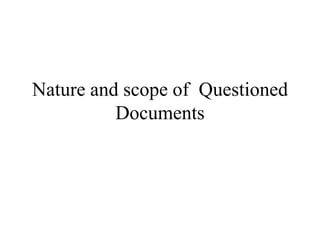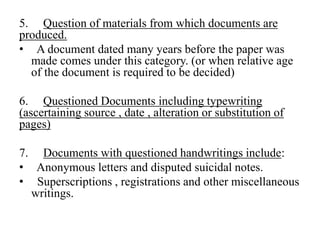This document provides an overview of questioned documents and their examination. It defines a questioned document as one whose authenticity or origin is doubtful. The document discusses various types of questioned documents including those with altered text, questioned signatures, age disputes, and anonymous letters. It outlines the preliminary examination process for questioned documents, noting factors like paper folds, ink, and handwriting analysis. The document emphasizes the importance of carefully handling and preserving questioned documents to avoid altering evidential value.
























































































